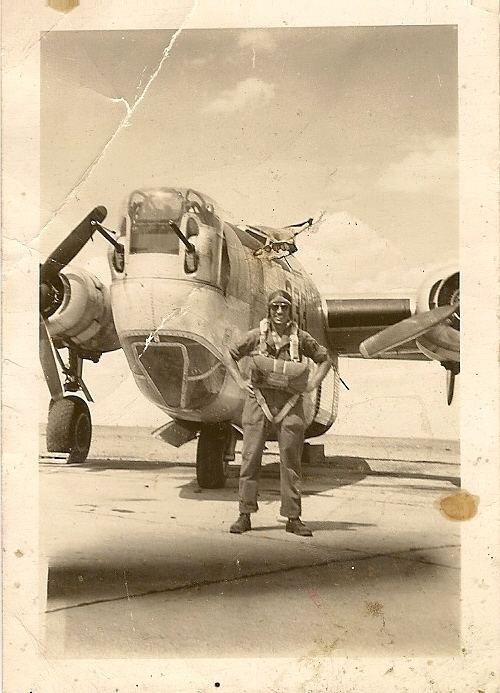Nationality American Ethnicity White | Occupation Inventor Name Jack Naylor | |
 | ||
Full Name Thurman F. Naylor Resting place Temple Israel CemeteryWakefield, Massachusetts, U.S. | ||
Jack naylor football 2013 stanford football camp oklahoma drill
Thurman F. "Jack" Naylor (June 24, 1919 – November 26, 2007) was an American inventor.
Contents
- Jack naylor football 2013 stanford football camp oklahoma drill
- Luke mitchell jack naylor kieran miles donny dome
- Post WWII
- Success with Thomson
- The collecting years
- Death
- References

Naylor was born in Baltimore, Maryland. Naylor learned to fly early. After joining the USAF, he trained and saw combat in P51 fighter planes over France and Germany. He switched to B24s and flew forays over Eastern Europe and ended up bombing the infamous oil refineries in Ploiesti, Romania. It was a momentous time and out of the windows of his bomber planes he was able to feed his growing passion for photography by shooting aerial pictures using a purloined Voigtländer. While based in Bengasi, Libya, he met Margaret Bourke-White and flew her along on his missions. She insisted on traveling with "Captain Jack" because he always "came back" which was a major feat back and forth over the Mediterranean.
Luke mitchell jack naylor kieran miles donny dome
Post WWII
Back stateside after the war, Naylor used the GI Bill to finish a degree in mechanical engineering from prestigious Johns Hopkins University in Baltimore, Maryland. But for his first job after graduation he chose to capitalize on his training during the war and became a test pilot. He put experimental planes through their paces until he crashed one into a river bank next to a pasture. The farmer ran up holding his mangled propeller blade and announced "son, you lost this thing..." The accident cut his swashbuckling career short.
Putting that dangerous occupation aside, Naylor became a consultant to industry. Hired to advise companies in how to grow and manage their resources, he was asked to prepare one of them for bankruptcy. Seeing the value in the business, Naylor embarked on yet another career as an entrepreneur and, in 1970, took over Thomson International Corporation which was headquartered in Waltham, Massachusetts. The engineering and manufacturing company made automotive and airplane parts. In the reorganization, Naylor moved to Massachusetts, made some tough choices by cutting personnel and closed extraneous plants.
Thomson's biggest seller was car thermostats and heat exchangers for aircraft engines. In desperation, Naylor, living out of a hotel room, sat in the restaurant at the Somerset Hotel in Boston and, over a matter of months, designed a new automotive thermostat. Able to work reliably at higher temperatures, it allowed the car designers to use smaller radiators. He took it to General Motors first, next Chrysler, Ford and then to Europe. Today every motor vehicle in the world uses that design.
Success with Thomson
That product line led to manufacturing and engineering plants in 13 countries. The successful CEO traveled extensively in the 1980s and early 1990s. He not only ran his own business, Naylor sat on the boards of directors of several FORTUNE 500 companies, Kodak being one of them. In order to meet all of his business obligations, Naylor spent a lot of time in the air. Tired of waiting in foreign countries for commercial airlines that would eventually not show up, Naylor bought his own plane and moved about the world on his company Gulfstream jet. Visiting customers and plants in Japan, he always brought back a new camera.
The collecting years
When he began his collecting, Naylor concentrated on cameras and photographs, but he quickly expanded to all manner of ephemera and photographica. Much of the collection was acquired at camera and antique shows, auctions, and yard sales. Many of the items were donated by photographers and inventors of the paraphernalia that supports photography. Since Boston is one of the epicenters of photography, he befriended innovators like Edwin Land, who founded Polaroid and "Doc" Harold Edgerton, professor of MIT, who invented the strobe light. Naylor owns the notebooks and scientific equipment of Leopold Godowsky, who along with Leopold Mannes co-invented the first color film.
The majority of the thirty thousand object collection is displayed at Naylor's suburban Boston home. The narrow pathways around the basement museum are like a maze. You have to carefully watch your step or you might trip on or bump into some priceless artifact. The 1031 daguerreotypes eclipse the 725 owned by the Library of Congress. Daguerreotypes are such a rich foundation of photography's early history. Their quality is unprecedented and there are one-of-a-kind examples produced by the finest practitioners of the medium, such as, Southworth & Hawes, Whipple, and Mathew Brady.
The dozens of glass display cases contain the world's largest collection of cameras used for espionage. Equipment produced for spying that spans the period from the American Civil War through the Cold War with Russia. Cameras that were worn by homing pigeons in the First World War, cameras mounted onto U2 spy planes, books, watches and cigarette lighters that conceal picture making devices. East German Stasi, British OSS, CIA and FBI are all represented. Some of them make annual pilgrimages to Naylor's museum to review their legacy. He acquired some of the most select items in the 1980s from a KGB agent he met in the USSR on a business trip.
Covering every inch of wall space are images by the giants of picture taking: Cecil Beaton, Yousef Karsh, Ansel Adams, William Wegman, Brad Washburn, and Alfred Eisenstaedt to name just a few. Pulitzer Prize winning photographs, Pictures of the Year and icons that are seared into the collective visual consciousness of the world's population. Naylor has original glass plates by Edward Curtis taken with huge field cameras while he traversed the American West for thirty years documenting Native Americans and their vanishing cultures. Thereby one of the most ambitious anthropological projects is preserved since most of the Curtis negatives were destroyed.
Upstairs there is a library of over 3000 volumes. Packed away are books, journals, notebooks, albums and first editions. Most impressive amongst them is a complete limited edition set of "Pencil of Nature", the first commercial book that included photographs. It was published by Fox Talbot, one of the people attributed with inventing photography. http://www.submin.com/general/manuals/articles/naylor.pdf
Nikon, Eastman, Fuji, Leitz, Graflex, Deardorff, Minox are all trademarks we recognize. They and Naylor's knowledge contribute to countless magazines and anthologies. Objects from a time gone by. Preserved for us to see. Recently Jack has been the subject of articles in Smithsonian magazine, Wall Street Journal, etc. He and his collection have been on NPR and the Discovery Channel. http://www.submin.com/general/manuals/smithsonian_8710.htm
Death
Naylor died on November 26, 2007 in Chestnut Hill, Massachusetts, at the age of 88, in his sleep from complications of spinal cancer.
